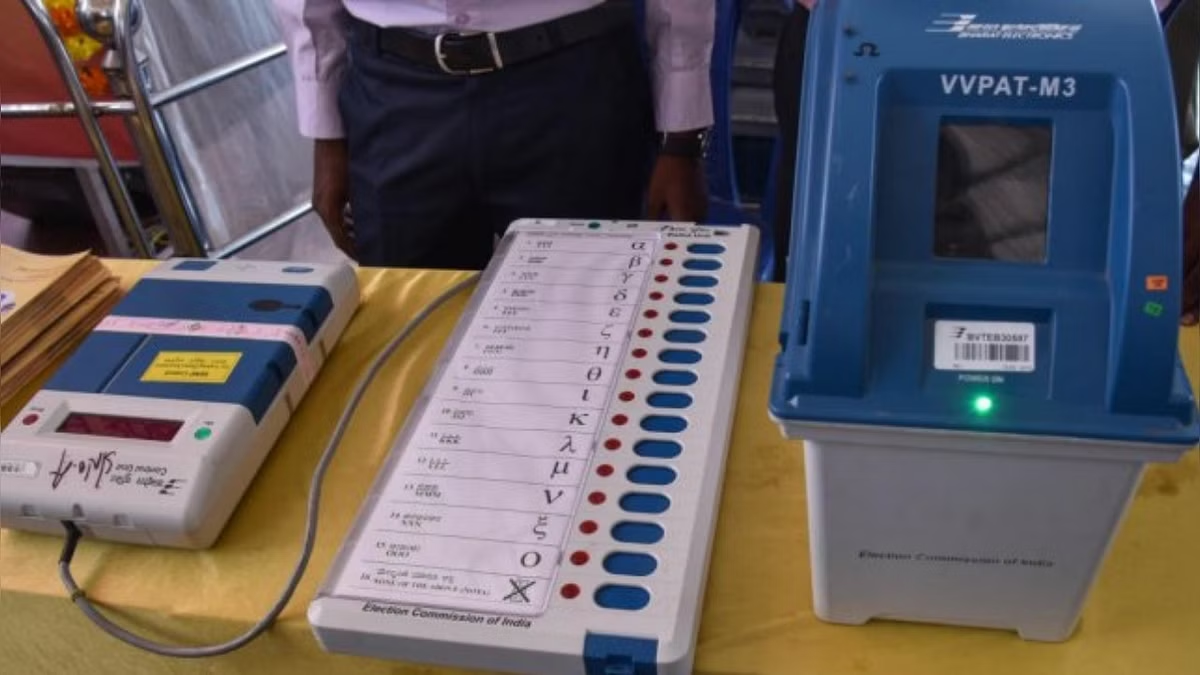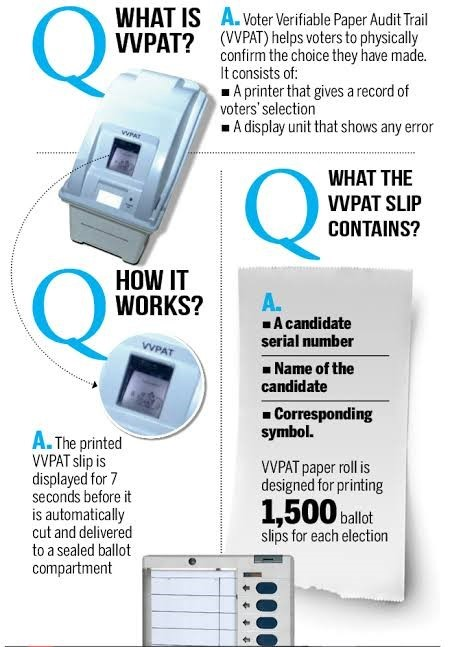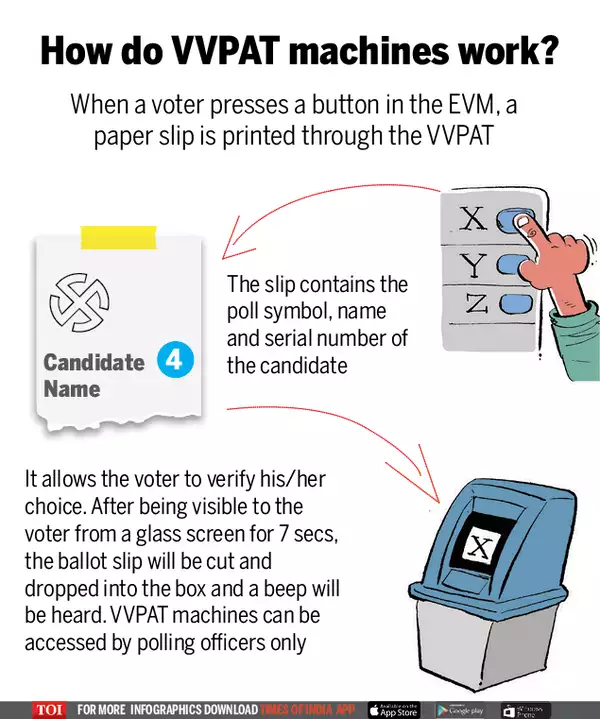
Copyright infringement not intended
Picture Courtesy: https://www.deccanherald.com/elections/karnataka/election-faqs-what-is-the-process-for-counting-vvpat-slips-1216546.html
Context: Demands for increased verification of VVPAT slips by political parties.
About Voter Verified Paper Audit Trail (VVPAT)
- The introduction of Voter Verified Paper Audit Trail (VVPAT) machines by the Election Commission of India (EC) was aimed at enhancing the transparency and integrity of the electoral process.
- The VVPAT system allows voters to verify that their vote has been correctly recorded by providing a printed slip that displays the chosen candidate's details.

Functionality of VVPAT
- A VVPAT machine is attached to the Electronic Voting Machines (EVMs).
- After a voter casts their vote using the EVM, the VVPAT machine prints a paper slip containing the details of the chosen candidate (name, symbol, and serial number).
- This paper slip is displayed behind a glass window for the voter to verify.
- After verification (within a limited viewing time), the paper slip drops into a secure compartment within the VVPAT machine.

Purpose of VVPAT
- The VVPAT system allows voters to physically verify that their vote has been correctly recorded by the EVM.
- In case of any dispute or recount, the paper trail provided by VVPAT slips serves as a reliable backup for verifying election results.
- The presence of VVPAT machines increases voter trust in the electoral process by providing a tangible record of their votes.
Introduction and Adoption of VVPAT by the Election Commission
The Election Commission of India (EC) introduced the VVPAT system following consultations and field trials:
- Development and Testing: The concept of VVPAT was discussed with political parties in 2010 to enhance the transparency of EVM-based polling. Prototype development and field trials were conducted in different locations to gather feedback and refine the design.
- Approval and Implementation: Based on expert committee recommendations and feedback from stakeholders, the EC approved the design of VVPAT machines in 2013. Initial use was piloted in selected polling stations, and by June 2017, VVPATs were adopted nationwide.
Demand for Widened Verification of VVPAT Slips
Political parties, particularly the opposition, have raised concerns about the adequacy of current VVPAT verification practices:
- Ensuring Election Integrity: Opposition parties argue that increased verification of VVPAT slips is essential to ensure the accuracy and fairness of election results. They believe that a higher percentage of VVPAT verification would strengthen public trust in the electoral process.
- Transparency and Trust: Given the importance of free and fair elections, political parties demand a more robust verification process to address any doubts or suspicions about EVM functioning.
Legal Cases and Supreme Court Interventions
- Various legal cases, including petitions filed by political leaders, have led to Supreme Court interventions regarding the adequacy of VVPAT verification.
- Court rulings have mandated changes in VVPAT verification protocols to address concerns raised by petitioners.
Election Commission's Position and Operational Challenges
The Election Commission has responded to demands for increased VVPAT verification while highlighting practical constraints:
- Logistical Challenges: The EC cites challenges such as time constraints, manpower availability, and infrastructure limitations in conducting extensive verification of VVPAT slips. They argue that a balance must be struck between transparency and operational efficiency to ensure timely result declaration.
- Concerns over Result Delays: Counting a higher percentage of VVPAT slips could potentially delay the declaration of election results, which is a critical factor in electoral processes.

Conclusion
- The debate surrounding VVPAT verification underscores the importance of maintaining public trust and confidence in democratic elections. While political parties emphasise the need for increased transparency through VVPAT verification, the Election Commission faces operational challenges in implementing extensive verification protocols. Striking a balance between these competing interests is crucial for ensuring the integrity and credibility of electoral outcomes.
Must Read Articles:
VVPAT
VOTER VERIFIABLE PAPER AUDIT TRAIL (VVPATs)
Source:
Indian Express
|
PRACTICE QUESTION
Q. In the context of a voter-verifiable paper audit trail (VVPAT), consider the following statements:
1. VVPAT is a printer that connects to electronic voting machines (EVMs).
2. When a person votes electronically, a paper slip is printed that they can keep with them.
3. It allows voters to confirm that their vote was successfully cast and generates a paper trail for auditing objectives.
4. The paper slip record includes the candidate's name and the symbol of the party or independent candidate.
How many of the above statements are correct?
A) Only one
B) Only two
C) Only three
D) All four
Answer: C
|






